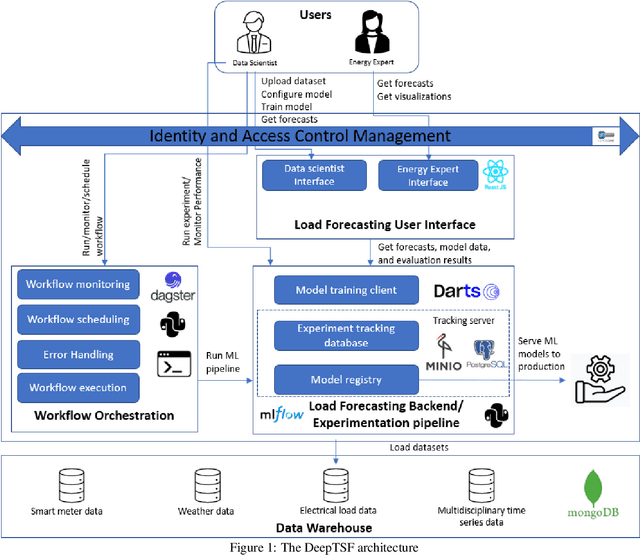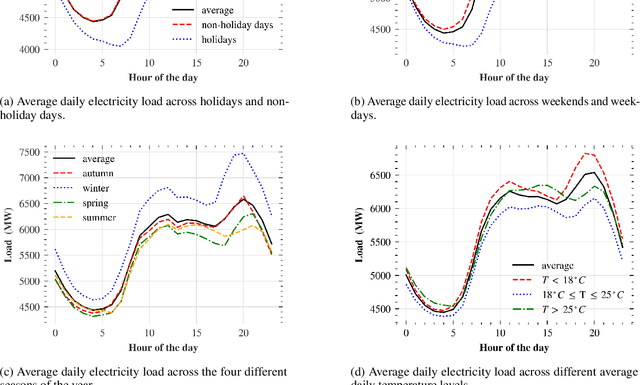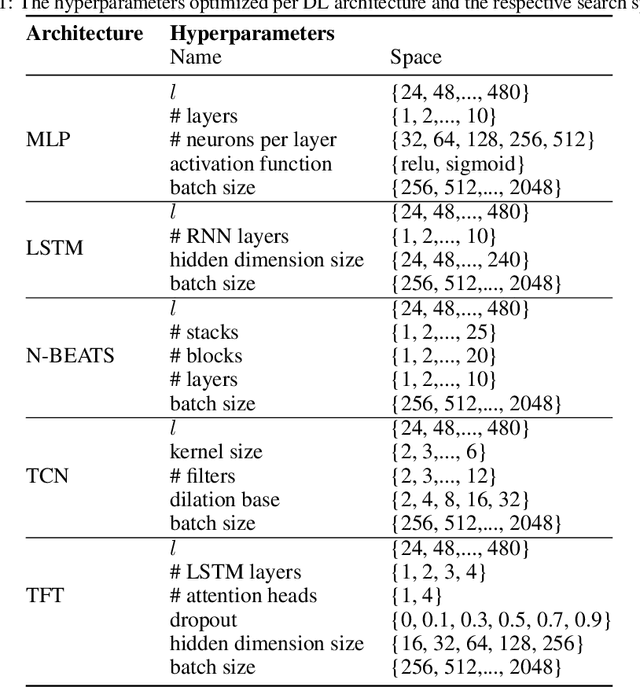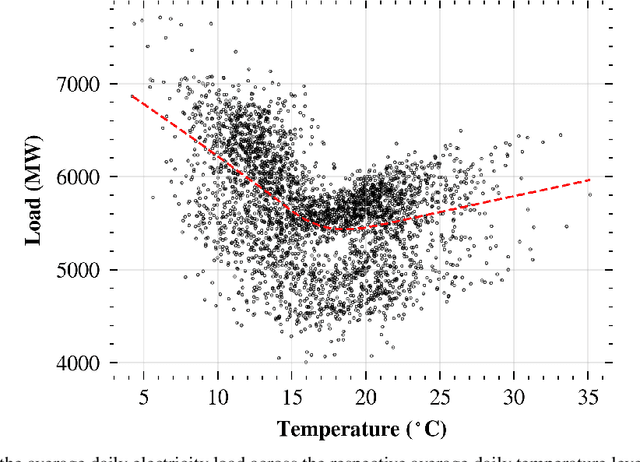Theodosios Pountridis
DeepTSF: Codeless machine learning operations for time series forecasting
Jul 28, 2023



Abstract:This paper presents DeepTSF, a comprehensive machine learning operations (MLOps) framework aiming to innovate time series forecasting through workflow automation and codeless modeling. DeepTSF automates key aspects of the ML lifecycle, making it an ideal tool for data scientists and MLops engineers engaged in machine learning (ML) and deep learning (DL)-based forecasting. DeepTSF empowers users with a robust and user-friendly solution, while it is designed to seamlessly integrate with existing data analysis workflows, providing enhanced productivity and compatibility. The framework offers a front-end user interface (UI) suitable for data scientists, as well as other higher-level stakeholders, enabling comprehensive understanding through insightful visualizations and evaluation metrics. DeepTSF also prioritizes security through identity management and access authorization mechanisms. The application of DeepTSF in real-life use cases of the I-NERGY project has already proven DeepTSF's efficacy in DL-based load forecasting, showcasing its significant added value in the electrical power and energy systems domain.
A comparative assessment of deep learning models for day-ahead load forecasting: Investigating key accuracy drivers
Feb 23, 2023



Abstract:Short-term load forecasting (STLF) is vital for the daily operation of power grids. However, the non-linearity, non-stationarity, and randomness characterizing electricity demand time series renders STLF a challenging task. To that end, different forecasting methods have been proposed in the literature for day-ahead load forecasting, including a variety of deep learning models that are currently considered to achieve state-of-the-art performance. In order to compare the accuracy of such models, we focus on national net aggregated STLF and examine well-established autoregressive neural networks of indicative architectures, namely multi-layer perceptrons, N-BEATS, long short-term memory neural networks, and temporal convolutional networks, for the case of Portugal. To investigate the factors that affect the performance of each model and identify the most appropriate per case, we also conduct a post-hoc analysis, correlating forecast errors with key calendar and weather features. Our results indicate that N-BEATS consistently outperforms the rest of the examined deep learning models. Additionally, we find that external factors can significantly impact accuracy, affecting both the actual and relative performance of the models.
 Add to Chrome
Add to Chrome Add to Firefox
Add to Firefox Add to Edge
Add to Edge